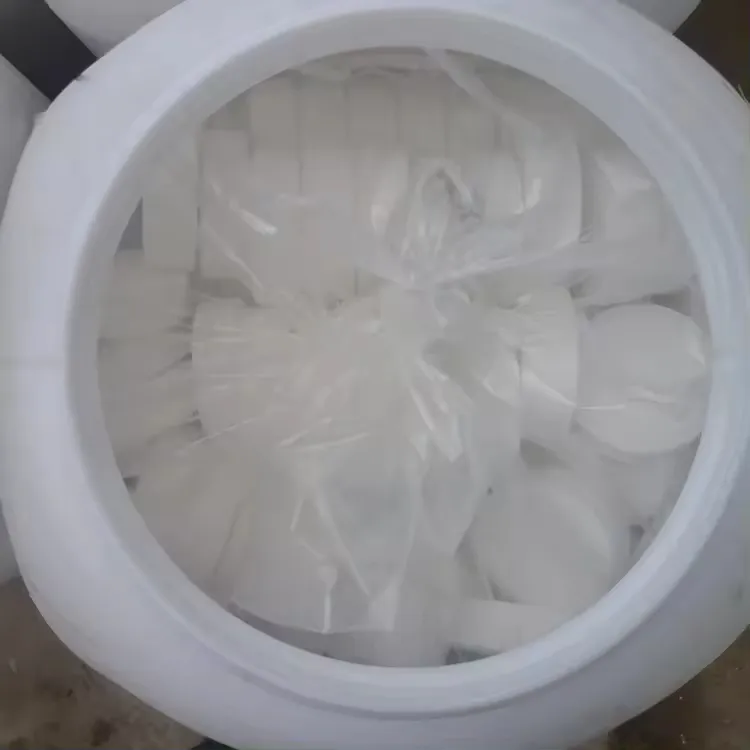



Preparation and Properties of 5 Percent Sodium Hydroxide Solution for Laboratory Use
Understanding 5% Sodium Hydroxide Composition, Uses, and Safety
Sodium hydroxide, commonly known as lye or caustic soda, is a highly versatile chemical compound with a wide array of applications. When we refer to 5% sodium hydroxide, we are generally describing a solution where sodium hydroxide constitutes 5% of the total weight or volume of the solution. This concentration is often used in various industrial and laboratory settings due to its effectiveness and safety when handled properly.
Composition and Preparation
A 5% sodium hydroxide solution is prepared by dissolving 50 grams of sodium hydroxide in enough water to make a total solution weight of 1 liter. This relatively low concentration allows for the chemical to retain its corrosive properties while being easier and safer to handle compared to more concentrated solutions, like 25% or 50% sodium hydroxide, which can be highly dangerous.
Applications and Uses
5% sodium hydroxide finds application across several fields, including
1. Cleaning Agent Due to its powerful alkaline properties, a 5% sodium hydroxide solution is often employed as a cleaning agent. It is effective in removing grease, oils, and other organic materials, making it particularly useful in industrial cleaning and maintenance of equipment.
2. pH Adjustment In various laboratory settings, sodium hydroxide serves as a pH regulator. It can be used to neutralize acidic waste or adjust the pH in chemical reactions, ensuring optimal conditions for various processes.
5 sodium hydroxide

3. Food Industry The food industry utilizes sodium hydroxide in processes like food preparation, where it assists in peeling fruits and vegetables and managing pH levels during the production of foods like olives and pretzels.
4. Chemical Manufacturing In the production of numerous chemicals, 5% sodium hydroxide acts as a reactant. It is used in the generation of biodiesel and as a precursor to numerous other compounds.
5. Cosmetics and Pharmaceuticals Some cosmetic formulations and pharmaceuticals incorporate sodium hydroxide to achieve desired pH levels, enhancing stability and safety in products.
Safety Considerations
While 5% sodium hydroxide is less hazardous than higher concentrations, it is important to exercise caution. Sodium hydroxide is caustic and can cause irritation or burns upon contact with skin or eyes. Therefore, personal protective equipment (PPE) such as gloves, goggles, and lab coats should be used when handling this chemical.
In case of skin contact, it is crucial to rinse the affected area with plenty of water for at least 15 minutes and seek medical attention if irritation persists. If ingested, it is vital to avoid inducing vomiting and to seek immediate medical assistance, as sodium hydroxide can cause severe damage to internal organs.
Conclusion
5% sodium hydroxide is a highly effective, versatile solution widely used in cleaning, pH adjustment, food processing, and chemical manufacturing. Its relatively low concentration makes it suitable for various applications while minimizing risks associated with handling caustic substances. However, users must remain vigilant and prioritize safety when working with this chemical. Understanding its properties, applications, and safety protocols ensures that one can harness the benefits of 5% sodium hydroxide without compromising personal safety or health.
-
Why Sodium Persulfate Is Everywhere NowNewsJul.07,2025
-
Why Polyacrylamide Is in High DemandNewsJul.07,2025
-
Understanding Paint Chemicals and Their ApplicationsNewsJul.07,2025
-
Smart Use Of Mining ChemicalsNewsJul.07,2025
-
Practical Uses of Potassium MonopersulfateNewsJul.07,2025
-
Agrochemicals In Real FarmingNewsJul.07,2025
-
Sodium Chlorite Hot UsesNewsJul.01,2025










